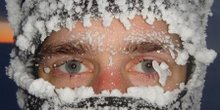Et lux in tenebris lucet
The Light Shines in Darkness
(Click on photo to enlarge)

As the bad weather finally cleared, all of a sudden it became clear how close we are to seeing the sun again. The winds settled and the thick layer of low cloud peeled back to reveal the beautiful 'mackerel skin' rippled appearance of altocumulus that makes the most beautiful skies; with it came light that has been so lacking for the last few months.
Celebrating the Return of Daylight

(Click on photo to enlarge)

As the bad weather finally cleared, all of a sudden it became clear how close we are to seeing the sun again. The winds settled and the thick layer of low cloud peeled back to reveal the beautiful 'mackerel skin' rippled appearance of altocumulus that makes the most beautiful skies; with it came light that has been so lacking for the last few months.
Celebrating the Return of Daylight

The northerly glow in the top picture is about as bright it got but the quality of the light is almost impossible to capture photographically. What is also difficult to convey is the appreciable excitement and burst of energy, on a personal level and around base that accompanies the gradual exit from persistent darkness. If nothing else it makes working outside a lot easier, since there is no need for torches in the middle of the day.
Sune Manhauling Jerry Cans

It also means that when kite-skiing large sastrugi are spotted quicker as you approach. Kite-skiing or boarding is one of the most popular sports on base, with at least half of base owning a kite. Unfortunately, my enthusiasm exceeds my technical ability but it makes a change from cross-country skiing. Either on skis or a snowboard, you attach yourself to a large kite- usually around 7-10 sqm in surface area much larger than a typical stunt kite- via a body harness and then by moving the kite, like a sail through the wind, generate lift to power you along.
Kite-Skiing On the Edge of the Perimeter

Regardless of the weather, one of the jobs of the Met (Meterological) team- the Metbabes- on the Simpson is the launch of a weather balloon, seven days a week. The balloon is filled with helium from the warmed stillages in the BART caboose, which is one of the blips on the horizon between the Laws and the Simpson. Hydrogen was formerly used and is still used in some parts of the world but its highly flammable nature means that helium, though more expensive, is a LOT safer! Officially BART stands for Balloon And Radiosonde Terminal but as it belongs to the Simpson, well...
Kirsty Filling the Balloon Inside BART

Attached to the balloon is a radiosonde, which continually sends back data as it rises high into the atmosphere including temperature, pressure and humidity, along with GPS data which allow calculation of wind speed and direction. Some reach as high as 25km (15 miles) in the atmosphere before bursting, at that height they reach the size of a double-decker bus as the helium expands. The data is logged on the Simpson before being sent off to the Met Office in Exeter, where it is fed into the models that provide daily weather forecasts for around the world including the UK, as well as providing data for the long-term monitoring projects that form part of the research here.
Launching the Weather Balloon from BART
The Simpson is in the background- look how light it already is at 11am!

The balloon is released at 11am daily, so that it is in the atmospheric area of interest for midday. They disappear fast, rapidly becoming small specks in a large sky and though visibility can be fantastic, within a few seconds they are lost to the naked eye. Round the world there are almost a thousand balloon launches at close to midday, all of which collect information which is then shared globally for both forecasting and climate research.
Pulling An Empty Pulk

The return of the daylight also means the end of the light box study, most people who were involved are only to glad to not have to be woken to an hour of bright light early in the morning nor to have to collect every drop of urine for 48 hours, as I have asked on a fortnightly basis during the darkness. While questions such as 'A does not precede B - BA: True or False' will not be missed. The return of the light means plenty of digging and for me the start to sorting out the study data.
The Tractors On the Old Drewry Windtail


